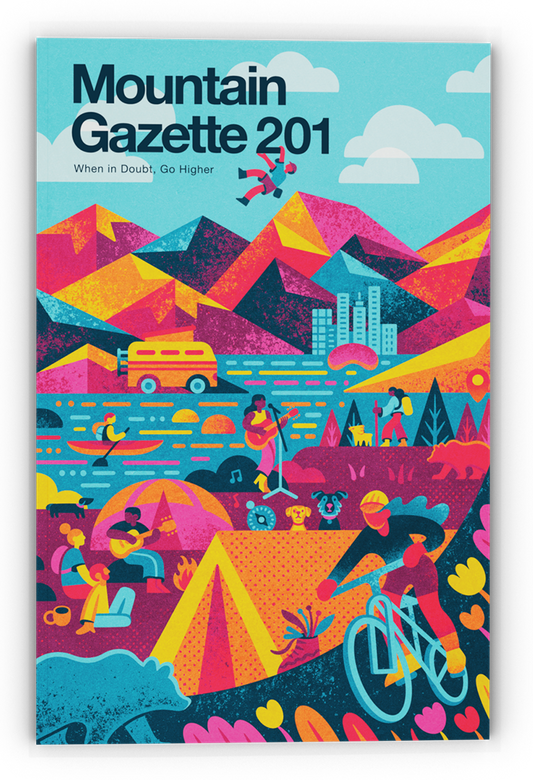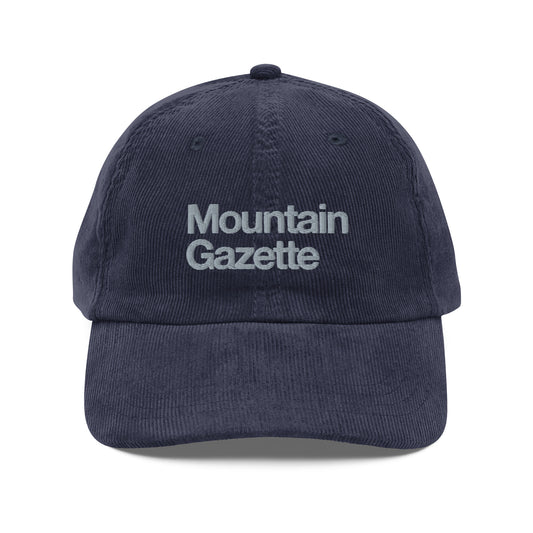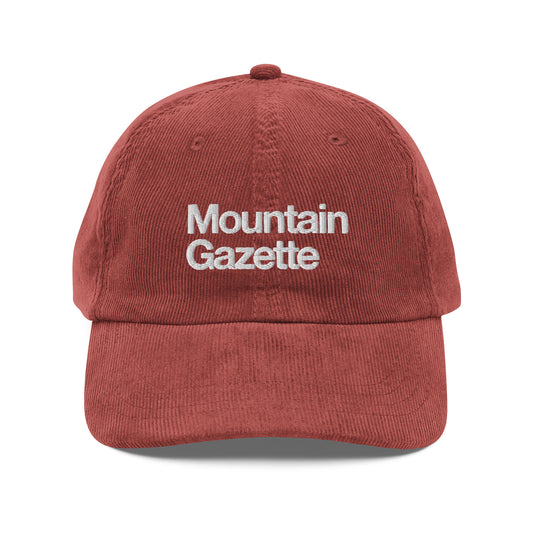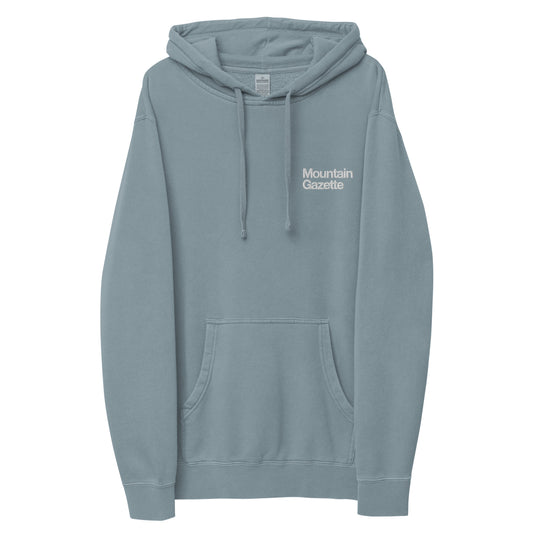By Jon Kovash
Originally published on MountainGazette.com in 2010 and republished here for the Sunday newsletter.
Over the last year, we’ve seen a spate of hand-wringing articles on the death of journalism, prompted chiefly by the recent demise of some venerable American daily newspapers. To us unemployed and underemployed journalists, both print and broadcast, this is an old, old story, one that we have followed intensely for years (because we have nothing better to do). Across the board and as predicted, media conglomeration was the beginning of the end of the newsroom as we have known it, and certainly the death of journalism as an activity largely engaged in by trained, experienced and allegedly dispassionate professionals.
Anyone who has ever been a beat reporter knows the full truth: there’s no easy, cheap or free, robotized way to replace us, and Americans are going to become even less informed than they are now. We have progressed from “57 channels with nothin’ on” to a formidable millions of channels, containing a vast amount of (unverified) information, but the news hole has shrunk right along with broadcasting and newspapering. Everyone knows that reporting, which is characterized by research and facts, continues to be replaced almost wholly by punditry and advocacy.
The pundits are stumped on how to save journalism now that it is no longer a center of employment that the private sector is eager to support. Government funding would be rejected out of hand as un-American. Besides, do we need another tepid national McDigest like NPR? It does look likely that any renaissance will have to happen in the nonprofit world, but that begs the question of where the money comes from. I remain generally skeptical that journalism will survive without paid journalists, but I came across a hopeful piece of the puzzle right in my own back yard.
It’s an email “list serve” called the Moab Area Progressive Network, or MAPN. It was started innocuously enough back in 2005 by local members of MoveOn. From the beginning, the content on MAPN was impressive. Moab already had a number of local activists who were used to backchanneling lots of time-sensitive content. They had to, because our sleepy local weekly paper does not. So MAPN readers are regularly offered new and real information, like the agenda of the council meeting that didn’t get in the paper, blow-by-blow accounts of crucial local political battles, links to “outside” stories of local concern and endless links to newly discovered government documents. There is plenty of rumor to be sure, but I’m amazed at how often, Wikipedia style, a string of messages will quickly zero in on the truth or a reasonable facsimile thereof.
It was an event in the spring of ‘09 that convinced me of the considerable reporting power that MAPN can generate on deadline. On April 15, an eerie and massive, post-global-warming dust storm blew through town. The unprecedented brownout was confirmed by DOE air quality monitors at the tailings cleanup site, and old-timers said they’d never seen anything like it. It was easily the biggest local story of the week, and the local paper ignored it altogether, while residents joked about the “brown rain” spots on their cars. So I posted a quick question on MAPN, something like, “Where the heck is all the dust coming from?” In the ensuing hours, the closest suspect was analyzed: large tracts of land south of town that were scraped for development and now abandoned in recession. Perps were identified, names were named and carnage described, but it didn’t add up to being the cause of the Armageddon-like dust event we had witnessed. Soon, other posts provided links to another related and under-reported regional story — the recent brown snow phenomenon at Colorado ski resorts. The readers were zeroing in. Then someone found links to satellite photos from April 15 that actually tracked the dust storm from northeast Arizona to Moab. In a day, the group, which numbers less than 100 members, had done for free the research the local paper should have done. The biggest still unanswered question: What is causing the dirt of Arizona to go airborne in such unprecedented volume? Is it some combination of land abuse and global warming? Not too many years ago, those questions too would have already been answered by curious, enterprising and competitive beat reporters and editors.
Like our dwindling quality print media, information on the Internet flows mostly to a relatively small and affluent elite that has computers, broadband accounts and ample leisure time. To access the MAPN content, you have to also pass a political litmus test. Through some makeshift democracy, the group has created a system whereby basically an impromptu kangaroo court is e-convened to confirm an applicant’s progressive/liberal bona fides (so far a handful have been rejected). I’m sure if it were put to the group, the members would not approve of this story being written, so I also have to pass on introducing some of the colorful characters.
MAPN has another trait that serves as a reminder that this is not a website and not mass media, but a hybrid: Like most reporters, I have resolved any anxieties I may have had about the potential implications of shooting off my mouth. We tend to be type-A/Gemini/windbag/argumentative hams anyway. But many MAPN members wouldn’t think of sending a letter to the editor and would not contribute emails to MAPN if they thought they could be read by non-members of the choir. Knowing the speed and power of the local grapevine, I find this to be naïve but understandable. There is real intimidation here — Moab’s conservative power brokers have long practiced the art of the boycott, both formal and informal, against local businessowners who endorse green positions.
One of MAPN’s crucial functions has been to smoke out and support progressive candidates for local office. Moab’s old-guard Republicans have duly taken note, and some have publicly labeled MAPN a “special interest group.” But at annual potlucks and in online surveys, the members have repeatedly rejected the notion that MAPN should essentially become the town’s Green Party, and they’ve affirmed that they want a userdefined safe haven and clearinghouse with few rules (one being that you can’t pass on or quote content without the author’s permission). Whether the list serve is a safe haven remains to be seen — I suspect that if you trash someone on MAPN, you are just as vulnerable to a libel suit or even arrest (Colorado and Utah still have criminal libel/“speech crime” statutes).
Like most worthy Internet endeavors, the MAPN list serve takes up too much of your time. I never erase a MAPN-labeled message until I’ve at least scanned it, so there’s an unread backlog on my mailbox that goes back for months. I know I’m not alone, because, every so often, I see someone respond to a months-old message.
Like most Moab residents, MAPN readers can be fickle in unpredictable ways. Often a thread is launched by a relatively obscure aspect of a town hall skirmish, which somehow triggers a raucous debate over, say, affordable housing, that rages for days until the next juicy topic presents itself. Recently, one activist member castigated the group for its poor showing at a hearing on the proposed nuclear power plant at Green River. What ensued was not a discussion of nuclear power plants, but soul-searching treatises regarding Just How Many Goddamned Meetings One Person Can Go To.
It’s a quirky system, but simple and cheap (thanks to a volunteer administrator), and if it can work in a town with 5,000 souls, the MAPN concept could surely be adapted elsewhere. It’s not The Solution to the death of journalism, but it’s at least a promising piece of a part of the solution, and I’m guessing MAPN will still exist long after Facebook and Twitter have become quaint anachronisms.















